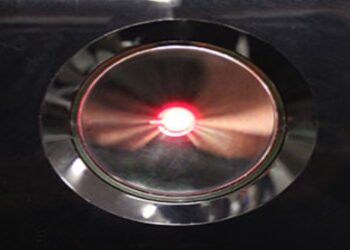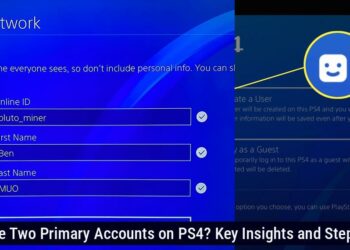Unlocking the Secrets of IME: Your Keyboard’s Hidden Talent
Have you ever looked at your keyboard, puzzled by how to write in Japanese, Chinese, or Korean? Perhaps you need a special symbol not on your QWERTY layout. Worry no more. The Input Method Editors, or IMEs, are here. They turn your keyboard into a linguistic ninja.
Understanding IME: More Than Just Letters
What is IME? An Input Method Editor (IME) is software that allows typing in languages with characters absent from standard keyboards. Writing Mandarin with only the English alphabet leads to gibberish. IME transforms keystrokes into beautiful characters for Japanese, Chinese, and Korean. It enhances your keyboard’s capabilities.
- Definition: IME is a translator for keyboards, allowing text input in languages with extensive character sets.
- Functionality: Whether you use a physical or touchscreen keyboard, IME works well. It supports different input modes for various character types. Think of it as having multiple ways to write.
- Microsoft IME: This built-in IME for Windows helps type in Japanese, Chinese, and Korean. It converts standard inputs into desired characters with ease.
- IME Mode: Curious about “IME mode”? It controls how the keyboard interacts with fields, determining character input methods for applications. It sets your keyboard’s behavior for different tasks.
Enabling IME: Powering Up Your Language Skills
Ready to power up with IME? Here’s how to enable it.
General Steps to IME Enlightenment
In earlier Windows versions, enabling IME was tricky. Thankfully, it is manageable. Begin at Start > Settings > Control Panel > Regional and Language Options. Locate the sacred Details button under the Languages tab. This way is old, but still valid.
Windows 10 and 11: The Modern IME Path
If you use Windows 10 or 11, enabling IME is straightforward:
- Step 1: Open the Settings app with Windows + I. Go to Time & Language > Language > Keyboard.
- Step 2: In the Keyboard settings, find Switching input methods and check the box for Let me use a different input method for each app window. This feature allows using different IMEs for different applications.
- Step 3: Restart your PC to activate the changes.
Adding a Language/IME: Expanding Your Linguistic Arsenal
Want to add a language to your IME? Windows makes this simple.
- Adding via Settings (Windows 10): Right-click the Start button (or press Windows key + X) and select Settings. Go to Time & Language > Language. Click Add a language, double-click your desired language, then hit Install. Language added!
- Adding via Control Panel (Classic Method): Go to Control Panel > Clock, Language, and Region > Language. Click Add a Language, choose your language, then click Add. It’s like expanding your language collection.
Google Input Tools: The Web-Based IME Alchemist
If you are in the Google world, Google Input Tools is a web-based IME. Go to your Google account settings, navigate to “Language” > “Input Tools” > “Edit”. Select the input tool, tweak settings, and click “Save”. Now web-based IME is active!
Embracing the Previous Version of Microsoft IME: For the Nostalgic Typist
If you prefer the older Microsoft IME for Japanese, you can revert on Windows 10 and 11:
- Type IME settings in the search bar in Settings and select the settings for your language (e.g., Japanese IME Settings).
- Go to General.
- Turn on Use previous version of Microsoft IME. Click OK. It’s like going back to an old favorite.
For Windows 11, the route is slightly different: Start > Settings > Time & language > Language & region. Find your language (like Japanese), click on Language options. In Microsoft IME, choose Keyboard options, then General. Finally, toggle on Use previous version of Microsoft IME
Managing IME Settings: Taming the Input Beast
Once enabled, you want to master IME settings.
IME Toolbar: Your Command Center
The IME toolbar is your control panel for IME. Right-click the IME options icon, usually in the system tray near the clock, and select IME toolbar. Access various settings and input modes from there.
Changing the Default IME: Setting Your Input Preference
Want a specific IME as your default method? Here’s how:
- From the Start menu, open Control Panel.
- Select Clock, Language, and Region, then click Change input methods. If missing options, change the View by setting to Category.
- If needed, click Add a language.
- You can set your desired IME as the default input method in the preferences window.
Removing an IME: Decluttering Your Input Options
If you need to remove an IME, follow this:
- Open Control Panel, find Date, Time, Language and Regional Options. (In newer versions, it’s under Clock, Language, and Region). Open Regional and Language.
- Select the Languages tab and click Details.
- Select the unwanted IME and click Remove. Goodbye, unwanted IME!
Switching Input Methods/Languages: Language Agility
Quick language switching is key to being multilingual. IME makes this easy.
Keyboard Shortcuts: The Speedy Language Switch
Keyboard shortcuts help with fast language switching. Master these for quick transitions:
- Windows Key + Spacebar: This combination cycles through installed keyboard layouts. Press until your desired layout shows up.
- Alt + Shift: A classic shortcut for toggling setups. It’s reliable.
- Ctrl + Shift + Space: Another useful shortcut; press until your language is selected. Experiment to find what works!
Language Bar: The Visual Switch
The Language bar offers a visual approach. It sits on the taskbar near the clock. Click the language icon, select your desired layout from the menu. Point and click mastery!
Troubleshooting IME: Conquering Input Quirks
IME Disabled: Resurrecting Your Input Power
If your IME disappears or disables, stay calm. Sometimes Windows acts up. Search for “What to do If IME is Disabled in Windows 10 and 11 – Shareus.com”. Troubleshooting guides often suggest rebooting or checking input settings to reactivate your IME.
Enabling IME Icon via Taskbar Settings: Bringing Back the Icon
No IME icon? Just right-click on the Taskbar. From the menu, choose Show touch keyboard button. Enabling this feature may restore the IME icon too. It’s quirky but effective!
Key Swapped Shenanigans: Language
Setting Sleuthing
Typing “email@address.com” turns into “email”address.com”? Key swapping can frustrate users. It often occurs due to wrong language settings. Using UK English instead of US English can switch your “ and @ keys. Verify your language settings against your keyboard layout. It’s a case of digital mistaken identity.
IME in Different Contexts: Beyond Keyboard Input
A quick note: IME isn’t *just* about typing languages. Another “IME” exists: Independent Medical Examination. This is a medical review by a doctor without prior ties to the patient. If you hear “IME” in a legal or medical sense, it likely refers to this examination, not your keyboard skills. Context matters.
Restarting IME Service (and other services): When Things Get Really Wonky
No specific “IME service” exists to restart. However, rebooting related services might fix input issues. If you restart services, be careful and understand what you’re doing. Restarting services randomly is not safe.
If you feel tech-savvy, troubleshooting deeper system issues may help. This might affect input but may not relate directly to IME. Consider rebooting services like:
- Virtual Machine Management Service (Hyper-V): Restarting Hyper-V may help obscure cases involving virtual machines. Usually, it is unrelated to standard IME issues.
- Device ManageR Service: This relates to specific device software. It is unlikely to affect general IME use.
- Cisco Services (e.g., SIP Proxy, Presence Engine): These communication services from Cisco are likely unrelated to IME issues unless you’re having network-related input problems.
- IMM (Integrated Management Module): This is about server management modules, definitely not about desktop IME.
- Network stack: Resetting the network stack with commands (like ipconfig /release, ipconfig /renew, netsh winsock reset) may fix connectivity issues. It rarely relates to IME unless there’s a strange network input issue.
Important Note: Restarting these services is a last resort. Only attempt this if you suspect they relate to input problems and understand possible fallout. For most IME issues, prior troubleshooting steps like checking settings, rebooting are safer and more relevant.
Here it is! IME explained. Go conquer multilingual typing with your new IME knowledge! And remember, when uncertain, a quick reboot often works – it’s a digital equivalent of a good coffee for your computer.











